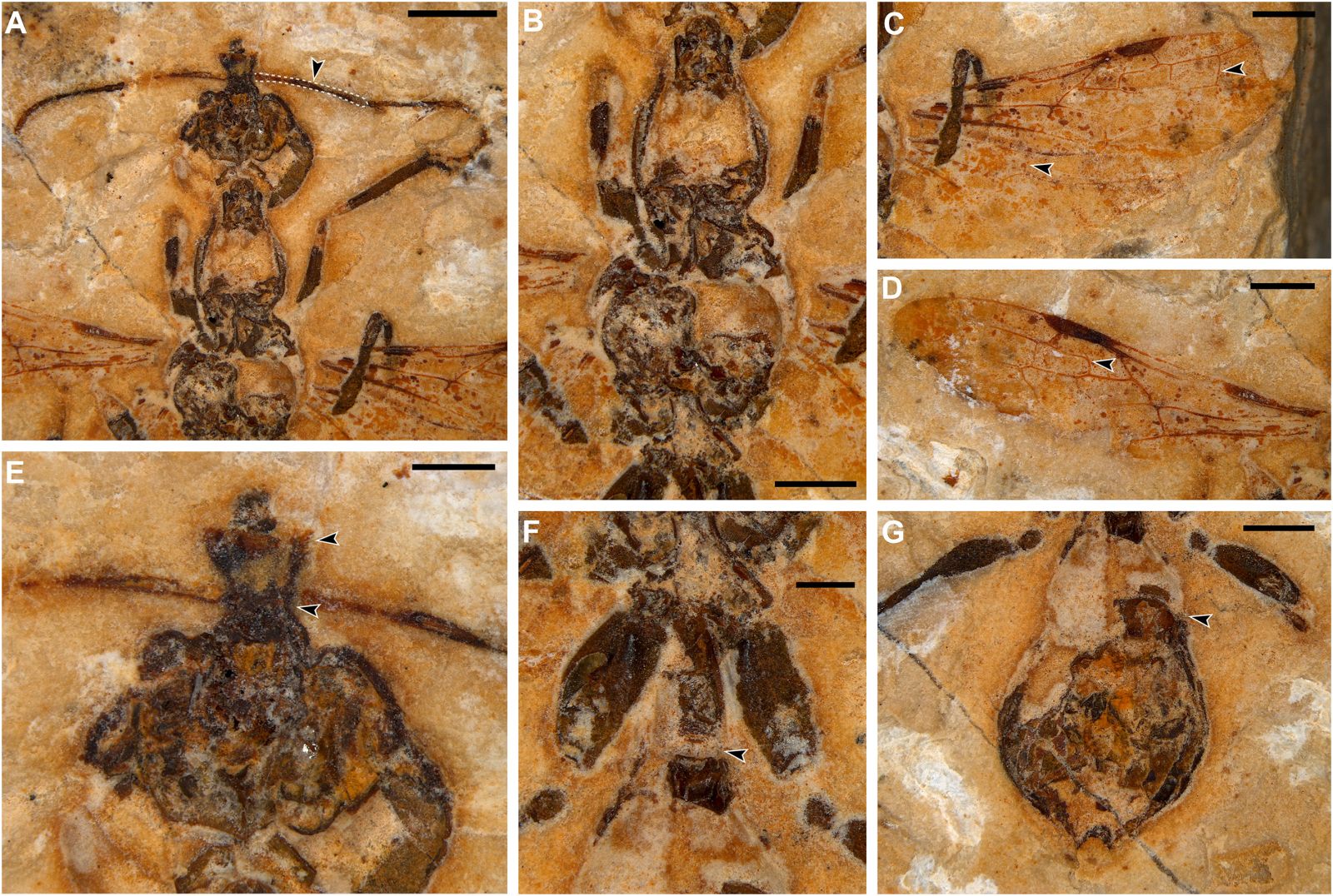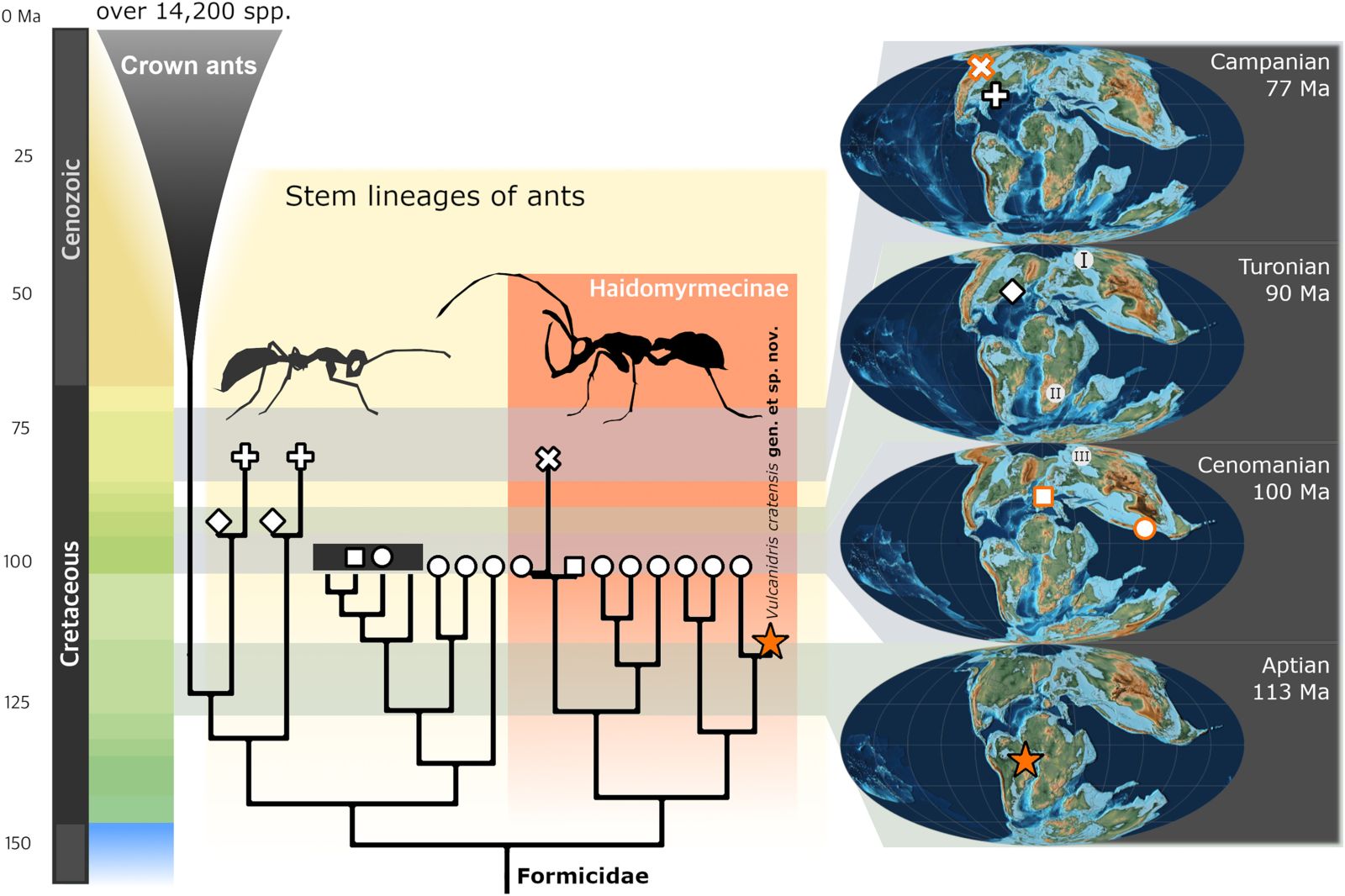Discovery of a 113-million-year-old "hell ant" 🐜
Follow us on Google News (click on ☆)
Researchers have uncovered an exceptional fossil in northeastern Brazil, dating back approximately 113 million years. Published in Current Biology, this study reveals a new species named Vulcanidris cratensis, belonging to the extinct subfamily Haidomyrmecinae.

(A) Head and anterior part of the mesosoma. Scale bar, 1 mm.
(B) Mesosoma. Scale bar, 1 mm.
(C) Left forewing. Scale, 1 mm.
(D) Right forewing. Scale, 1 mm.
(E) Detail of the head. Scale bar, 0.5 mm.
(F) Detail of the petiole. Scale bar, 0.5 mm.
(G) Metasoma. Scale: 1 mm.
This ant features sickle-shaped, upward-facing jaws, a unique characteristic. Scientists believe it used these jaws to capture and impale its prey, demonstrating early specialization in the evolutionary history of ants.
The Haidomyrmecinae, or "hell ants," are known for their bizarre predatory adaptations. Unlike modern ants, their jaws closed vertically, and some species had horn-like projections above their mouths.
The fossil was discovered in the Crato geological formation, once located in the northern part of the supercontinent Gondwana. This region is renowned for its exceptionally well-preserved fossils, offering a unique glimpse into past biodiversity.
The use of X-ray microtomography confirmed this ant's belonging to the Haidomyrmecinae subfamily. This technique revealed anatomical details invisible to the naked eye, confirming the unique features of this species.

Left: schematic phylogenetic tree of Cretaceous Formicidae, highlighting Haidomyrmecinae among the ancestral lineages of ants. Symbols indicate fossil deposits where ants have been found.
Right: maps showing the stratigraphic distribution of Cretaceous ant fossils, based on data from the Paleobiology Database. Symbols correspond to those in the left tree. Orange-outlined symbols indicate sites where Haidomyrmecinae have been identified. Maps were produced with GPlates using PALEOMAP project reconstructions.
This discovery suggests that ants were already widespread and diversified over 100 million years ago. It challenges assumptions about how quickly these insects developed complex adaptations.
Why is the Crato formation so important for paleontology?
The Crato formation in Brazil is an exceptional fossil site, known for the remarkable preservation of its specimens. Unique fossilization conditions have allowed the conservation of fine anatomical details, rarely observed elsewhere.
This site provides valuable insight into biodiversity during the Cretaceous, a key period in insect evolution. Fossils discovered here include plants, animals, and now insects, such as the hell ant.